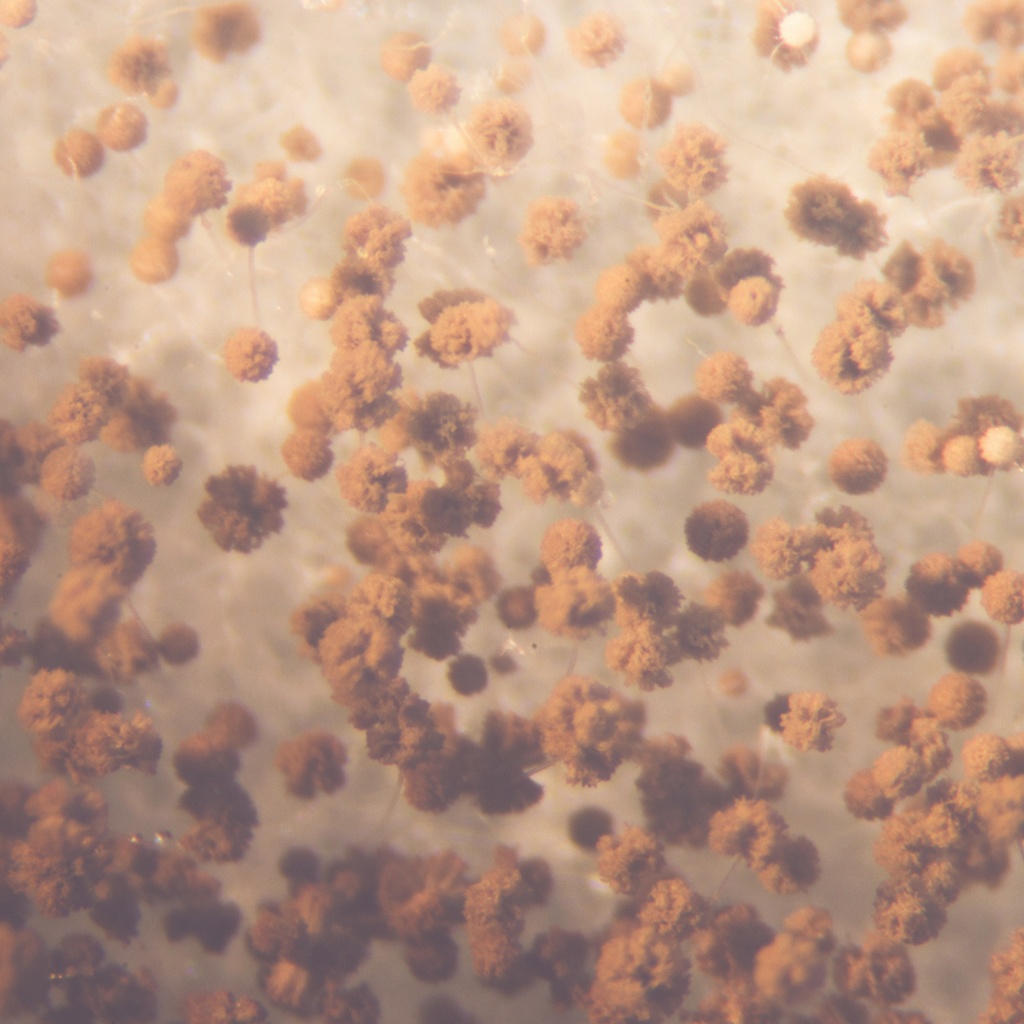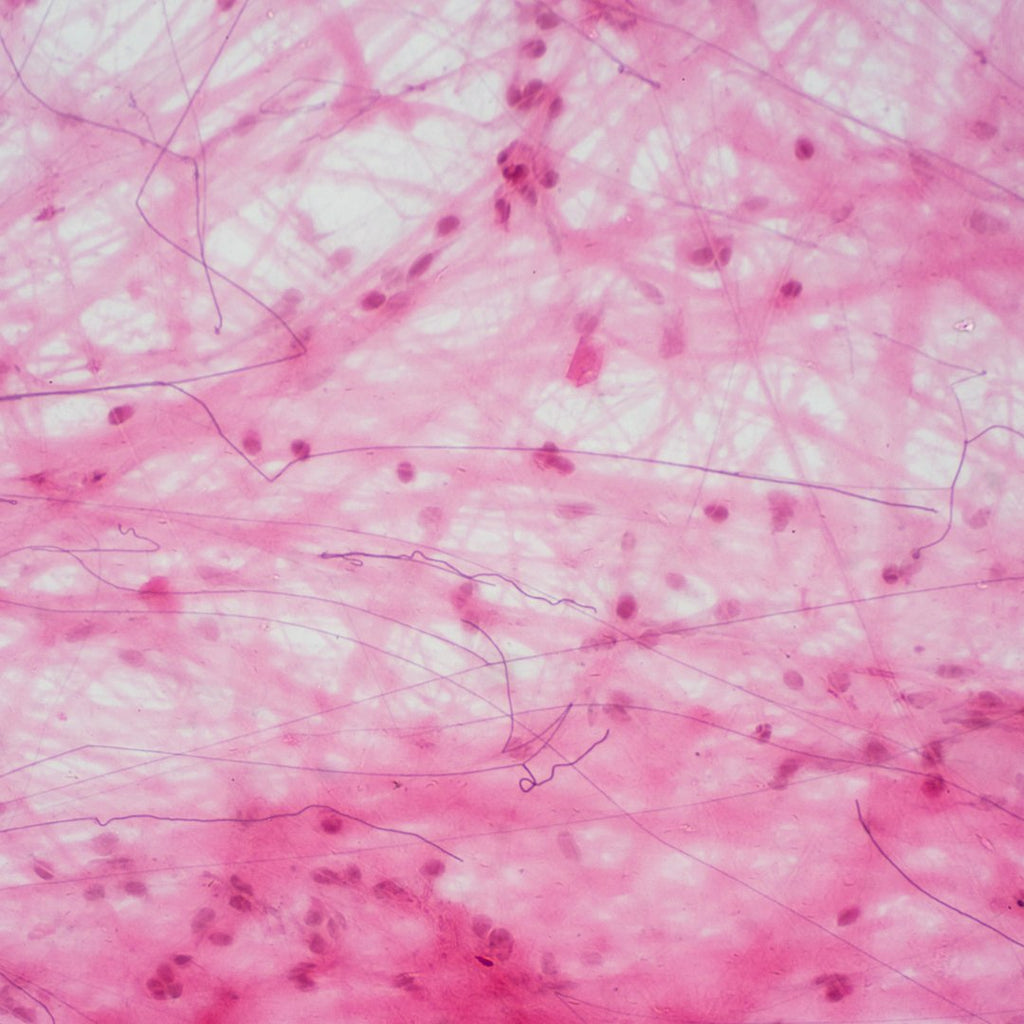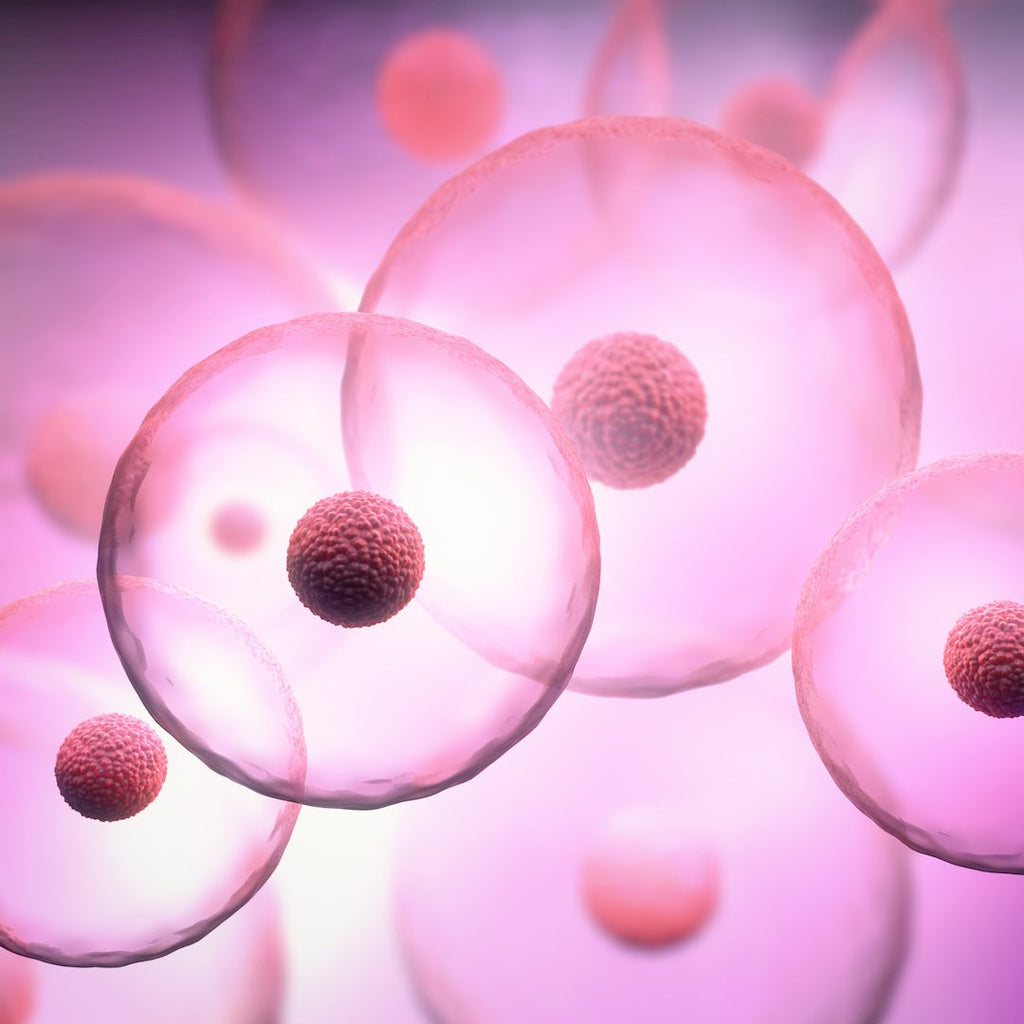The human body is exposed to a never-ending onslaught of both exogenous and endogenously produced free radical ‘insults’. Acting almost like bullets, free radicals such as hydrogen peroxide, superoxide and hydroxyl radicals, fire around the body creating havoc by reacting with cell membrane fatty acids and proteins, and damaging cellular components such as DNA & RNA. Unless stopped, free radicals can induce a level of permanent cellular damage that can ultimately predispose us to numerous conditions including diabetes, cardiovascular disease, autoimmune diseases, neurodegenerative disease and cancer. The human body is, however, well equipped with a variety of antioxidants, both endogenously produced and exogenously obtained, that serve to counteract the deleterious effect of oxidative stress.
The oxidative-defence pathway: nature’s shield
The three major endogenously produced enzymatic antioxidants: superoxide dismutase (SOD), catalase and glutathione peroxidase, provide a primary defence system against cellular damage by removing free radicals as they are produced during metabolic reactions. The main action of SOD is to reduce the damage caused by superoxide, the most common free radical, by converting superoxide into water and hydrogen peroxide. Catalase then acts to convert hydrogen peroxide to oxygen and water, thereby neutralising it. The predominant SOD, containing copper and zinc, is found within the cytoplasm, whilst a manganese-containing SOD is located in the mitochondria. These endogenous ‘primary antioxidants’ have high catalytic properties but, because the majority are mineral-dependent enzymes, their activity (reduced or enhanced) is directly affected by dietary intake.
Rats fed zinc-deficient diets have been shown to have significantly reduced SOD activity when compared to rats fed adequate zinc. (Olin et al, 1995). Similarly, the activity of the selenium-containing glutathione peroxidase enzyme, responsible for speeding up the reaction between glutathione and free radicals (such as hydrogen peroxide) will be negatively affected if dietary selenium is low and enhanced when selenium is high. Indeed, the cardiovascular-protective benefits of including Brazil nuts in the diet is thought be in part due to their high selenium content contributing to the reduction of oxidative stress, by boosting the activity of glutathione peroxidase. (Stockler-Pinto et al., 2009)
Unlike primary antioxidants that can cope with high volumes of free radicals, the secondary (non-enzymatic) antioxidants, such as vitamins, minerals and polyphenols, which are sourced via the diet, have a more limited capacity to quench free radicals. Working synergistically, this network of antioxidants functions to prevent, inhibit or repair free radical-induced damage; if secondary antioxidant reserves become saturated, or decline, and primary antioxidant defences are compromised, oxidative stress can become excessive.
Synergy = success
Dietary intervention studies focusing on diet quality have shown that antioxidant activity can be manipulated. One of the most well documented diets for enhancing health outcomes and reducing disease risk is the Mediterranean diet. Considered one the world’s healthiest diets, the Mediterranean Diet is rich in polyunsaturated (namely omega-3) and monounsaturated fats, high quality protein, complex carbohydrates and fibre, as well as being abundant in essential vitamins, minerals and phytonutrients that together contribute to its potent ability to reduce oxidative stress and inflammation. It has been shown that following a Mediterranean diet (the PREDIMED [Prevención con DIeta MEDiterránea] intervention) can lead to an increase in plasma total antioxidant capacity (or non-enzymatic antioxidant capacity, NEAC) (Zamora-Ros R et al., 2013). As NEAC takes into account all antioxidants from food, and their synergistic effects, it is important to note that the benefits attributed to such a diet are not due to any single nutrient or micronutrient, but are a result of the synergistic and complementary actions of multiple nutrients, acting at multiple levels. Disrupting this delicate interplay by the removal of one or more key nutrients has the capacity to affect multiple biological systems. For example, reduced glutathione, the active form of this antioxidant, becomes oxidised (deactivated) as a result of its antioxidant activity, and so requires reduction through glutathione reductase to regain its antioxidant capacity. Glutathione reductase requires the FAD coenzyme form of riboflavin (vitamin B2) for this reduction reaction. Riboflavin is also a co-factor for pyridoxine phosphate oxidase, the enzyme required for vitamin B6 production (as pyridoxal 5′-phosphate) which is, in turn, an essential cofactor for the enzymes cystathionine-b-synthase (required for the conversion of homocysteine to cysteine) and cystathionine g-lyase (required for the conversion of cysteine to glutathione). Thus, deficiency in any vitamin has the potential to negatively affect oxidative-defence pathways. (Marashly & Bohlega 2017)
The effectiveness of antioxidants in protecting against oxidative stress depends not only on their reactivity towards reactive oxygen species, but also on their role as recyclers. Antioxidants continuously go through a process of oxidation (the loss of an electron or an increase in oxidation state) and reduction (gaining an electron or a decrease in oxidation state) and this process of ‘redox cycling’ is essential for maintaining optimal oxidative-defence pathways. The process of oxidation deactivates an antioxidant, and makes it a pro-oxidant unless it is ‘gifted’ with a stabilising electron from another source. This process of ‘recharging’ allows it to regain its antioxidant activity. This can be likened to a relay race whereby a baton is transferred from one runner to the next, where the runners include vitamins C & E, Coenzyme Q10, lipoic acid and glutathione (amongst others). If one runner pulls out of the race, then this ultimately affects the whole team. As such, the diet provides a diverse selection of antioxidant-rich foods to support this complex network.
Source: Members of Antioxidant Machinery and Their Functions By Shalini Kapoor Mehta and Sivakumar Joghi Thatha Gowder. DOI: 10.5772/61884
Targeted supplementation and to cover all bases
Free radicals are ubiquitous and can be generated outside the cell, within cell membranes, the mitochondria and the cytoplasm; there is therefore a need to maintain a well-armed antioxidant-defence system that is able to support the entire body. Unless we adopt eating behaviours that reflect the quality of the aforementioned Mediterranean diet, consuming a diet that is rich in antioxidant nutrients, then it is highly likely that our antioxidant status will be compromised. While diet should certainly be seen as the primary source of nutrients required to protect us against oxidative stress, supplementation can be highly beneficial where diet falls short or when an increased need arises.
Supporting cell membrane health
The general ‘rule’ of antioxidants is that lipid-soluble antioxidants (such as vitamin E) protect the lipid-soluble part of cells, whilst water-soluble antioxidants (such as vitamin C) protect the water-soluble part of cells. Vitamin E & β-carotene (fat soluble), for example, protect against free radicals targeting the inner layer of the cell membrane, while vitamin C (water soluble) protects only the outer layer. Astaxanthin is a remarkable antioxidant that, due to its unique molecular structure, spans the membrane thereby protecting both surfaces, as well the fatty acids making up the bi-layer. Additionally, unlike other antioxidants like vitamins C & E and other carotenoid antioxidants such as lycopene and zeaxanthin, astaxanthin never turns into a pro-oxidant. Astaxanthin’s free radical-scavenging capacity (as defined by its Oxygen Radical Absorbance Capacity, or ORAC value) is one of the most potent of all the antioxidants, having been shown to be 6000x more than vitamin C, 800x more than coenzyme Q10, 550x more than vitamin E, 200x more than polyphenols and 75x more than alpha lipoic acid, making it a valuable addition to other essential antioxidant intake.
Humans cannot make astaxanthin, so must consume it in the diet, via the consumption of marine animals such as salmon, prawns, crab and lobster, that themselves consume Haematococcus pluvialis (H pluvialis), an algae, responsible for these creatures’ bright pink-red colouring. To achieve a 4mg intake (the equivalent of 1 capsule of Igennus Pure & Essential AstaPure® Astaxanthin) you would need to consume 1.25 portions of wild sockeye salmon or 6.7 portions of wild pink salmon, daily. While 4mg can be achieved by consuming 1.9 portions of farmed rainbow trout, farmed fish do not have free access to their natural food, including H. Pluvialis, and so are fed synthetic astaxanthin to achieve their characteristically ‘salmon pink’ colour ; this synthetic form offers little to no biological action.
We recommend: AstaPure® Astaxanthin for optimal trans-membrane support and to enhance antioxidant recycling actions of membrane associated antioxidants.
Mitochondrial targeted support
The mitochondrial electron transport chain is a major site of production of ROS in the cell, making mitochondria and mitochondrial DNA prime targets for oxidative damage. Coenzyme Q10 is a critical component of mitochondrial respiration and the reduced form (ubiquinol) plays a key role as an antioxidant, by neutralising free radicals, and first line defence against oxidative stress induced damage, within the mitochondria. As we age, our ability to keep up with the demand for CoQ10 reduces, and with dietary intake (which is primarily from organ meat) generally low, many of us are at risk from sub-optimal levels. High levels of oxidative stress within the mitochondria can deplete levels of ubiquinol leading to symptoms of muscle weakness and fatigue, the primary indicators of deficiency.
We recommend: VESIsorb Ubiquinol for defence against oxidative induced damage within the mitochondria. The patented VESIsorb® delivery system converts ubiquinol into water-soluble particles for fast-tracked absorption through the gut, producing higher blood plasma levels and up to 6x longer-lasting action than other CoQ10 supplements.
Supporting the cytoplasm
Glutathione is a key antioxidant, located in both the cytoplasm and mitochondria; it serves multiple roles in our cellular antioxidant defences. Levels are known to decrease with age, and markedly reduced glutathione levels are observed in a number of age-related inflammatory driven diseases. As a tri-peptide, [L-cysteine, L-glutamine and L-glycine] L-cysteine is known to be the limiting amino acid in glutathione production but supplementary L-cysteine loses the majority (~85%) of its sulphur groups (the active part of glutathione) during digestion. N-Acetyl –L-cysteine (NAC) is, in contrast, more stable and only loses ~15% of sulphur therefore offers superior antioxidant support, through its promotion of glutathione synthesis. For optimum efficacy, however, NAC needs synergists. Alpha lipoic acid, L-glutamine, vitamin C and vitamin E play a supporting role in the regeneration of glutathione via recycling actions, with vitamin C converting oxidised glutathione into its reduced form, and vitamin E having the same effect on vitamin C by recycling dehydroascorbic acid (oxidised ascorbic acid) back to ascorbic acid.
Up-regulating endogenous anti-oxidant production: arm your Nrf2 gun
Several thousand molecules with polyphenol structure (i.e., several hydroxyl groups on aromatic rings) have been identified in plant foods, and their antioxidant and anti-inflammatory benefits are well documented. Some of the most studied include epigallocatechin gallate (EGCG), resveratrol, curcumin, quercetin, and isoflavones. In addition to benefits ranging from heavy metal chelation, antioxidant and anti-inflammatory actions, they also activate nuclear factor (erythroid-derived 2)-like 2 (Nrf2), an antioxidant response element signalling pathway. Nrf2is a key factor in the control of the expression of genes involved in the regulation of oxidative stress, via the enhanced production of cellular antioxidants. Thus, polyphenols can directly enhance endogenous antioxidant defences. While found predominantly in plant foods, the effects of polyphenols depend on the amount consumed and on their bioavailability, which is generally extremely poor. While a polyphenol rich diet is recommended, supplementation can be viewed as a useful tool to enhance the benefits associated with polyphenols.
Curcumin, well documented for its potent anti-inflammatory activity also acts on Nrf2 and leads to improved total antioxidant capacity and an increase in endogenous anti-oxidant production, such as catalase, but only when retained as the ‘free’ form. (DiSilvestro et al., 2012) The majority of curcumin passes through the body unchanged, and the remaining amount is quickly metabolised by the liver, meaning little or no curcumin reaches target tissues in the free, active form. Longvida optimised curcumin is the only supplement that has been shown to bypass the liver and deliver free form curcumin to cells, and across the blood brain barrier. (Gota et al., 2010).
We recommend: Longvida® Optimised Curcumin. This highly soluble, highly stable form of ultra-bioavailable curcumin delivers an incredible 285x superior bioavailability compared with standard curcumin, along with 65x higher peak plasma levels and 7x longer-lasting action.
Supporting co-factor activity and healthy methylation
The methionine/glutathione transsulfuration pathway is critical to the body’s ability to detoxify; disruption of this pathway (which can be induced by low cofactor status) has a significant and negative impact on our ability to combat oxidative stress and inflammation.
We recommend: Super B-Complex a full spectrum, pre-methylated B-Complex. With its body-ready, active nutrient forms, it supports healthy methylation and cofactor status.
Summary
The human body relies on a complex antioxidant defence system to protect itself against the continuous production of, and exposure to, free radicals and oxidative stress. These antioxidants work synergistically, via different mechanisms to prevent, inhibit or repair the damage caused by free radicals, in order to combat all stages of oxidative stress. While diet should be optimised to provide a diverse array of antioxidant nutrients, supplementation may be required to address shortfalls that are common in Western-style diets. While nutrition research supports the benefits of dietary intervention with key antioxidant micronutrients and phytonutrients, targeted combination therapies appear to elicit greater benefits than any one alone. Addressing multiple pathways involved in regulating oxidative stress concurrently is significantly more beneficial to health and disease management than any nutrient in isolation.
References
Gota VS, Maru GB, Soni TG, Gandhi TR, Kochar N, Agarwal MG: Safety and pharmacokinetics of a solid lipid curcumin particle formulation in osteosarcoma patients and healthy volunteers. Journal of agricultural and food chemistry 2010, 58:2095-2099.
Olin KL, Golub MS, Gershwin ME, Hendrickx AG, Lonnerdal B, Keen CL. Extracellular superoxide dismutase activity is affected by dietary zinc intake in nonhuman primate and rodent models. Am J Clin Nutr. 1995 Jun;61(6):1263-7.
Stockler-Pinto MB, Mafra D, Farage NE, Boaventura GT, Cozzolino SM. Effect of Brazil nut supplementation on the blood levels of selenium and glutathione peroxidase in hemodialysis patients. Nutrition. 2010 Nov-Dec;26(11-12):1065-9.
Marashly ET & Bohlega SA. Riboflavin Has Neuroprotective Potential: Focus on Parkinson’s Disease and Migraine. Front Neurol. 2017 Jul 20;8:333.
Zamora-Ros R et al., Mediterranean diet and non enzymatic antioxidant capacity in the PREDIMED study: evidence for a mechanism of antioxidant tuning. Nutr Metab Cardiovasc Dis. 2013 Dec;23(12):1167-74.






